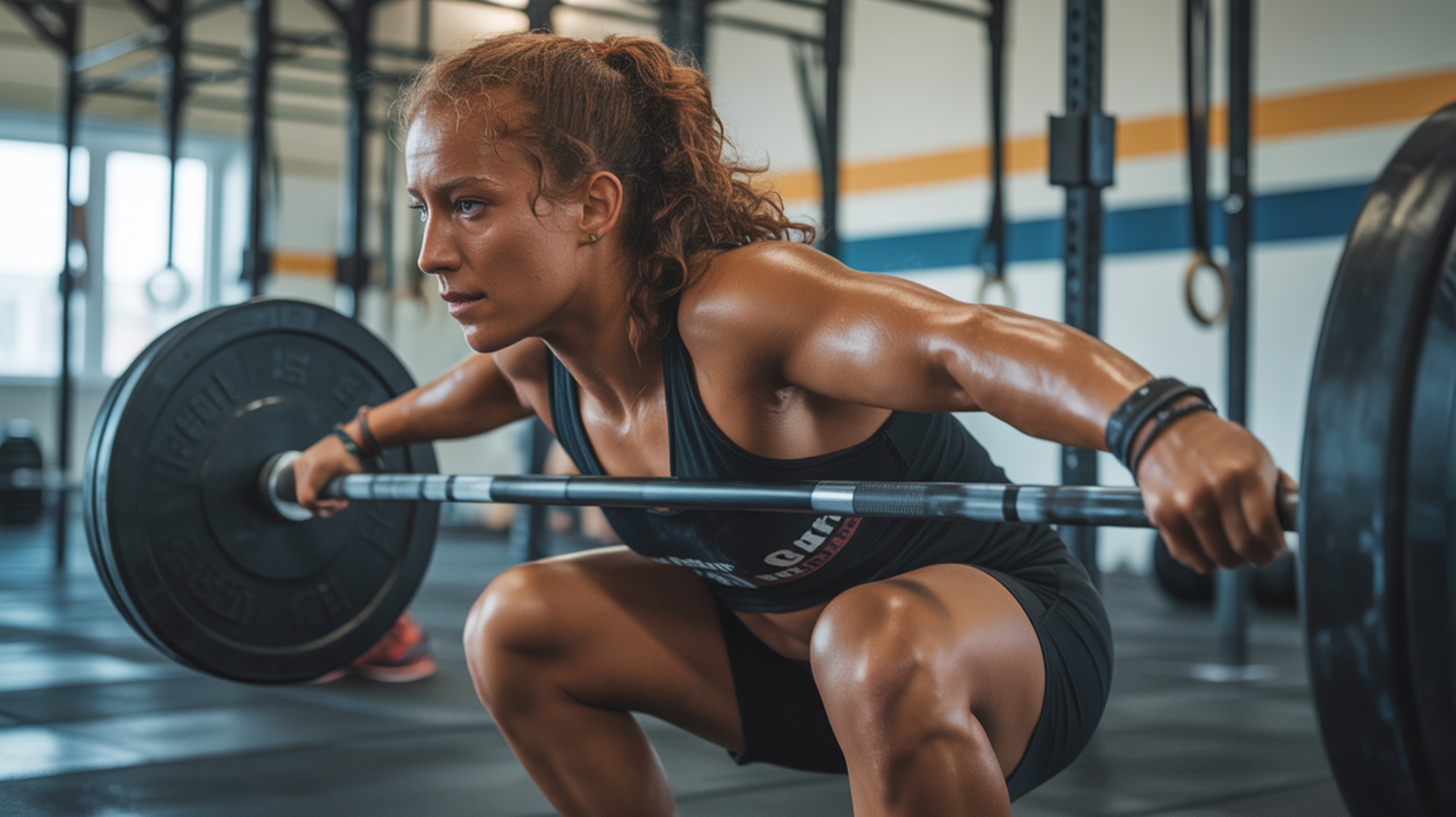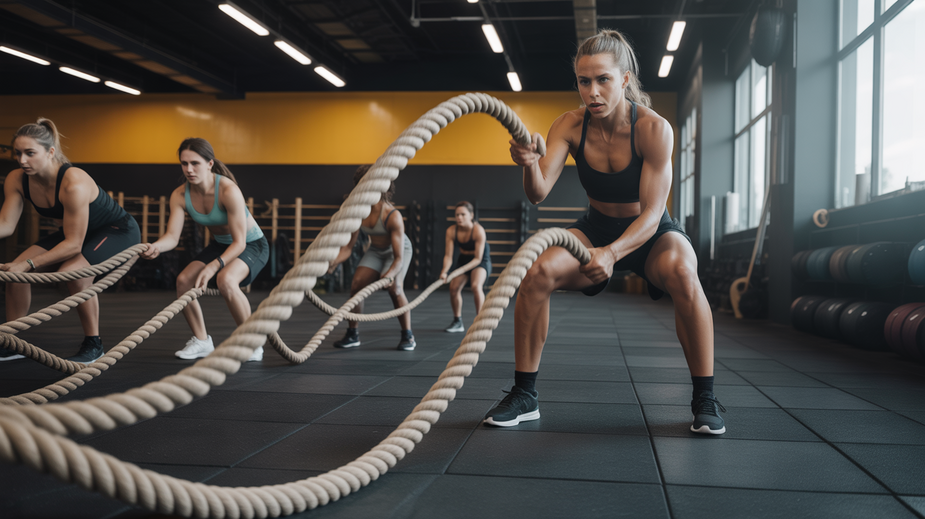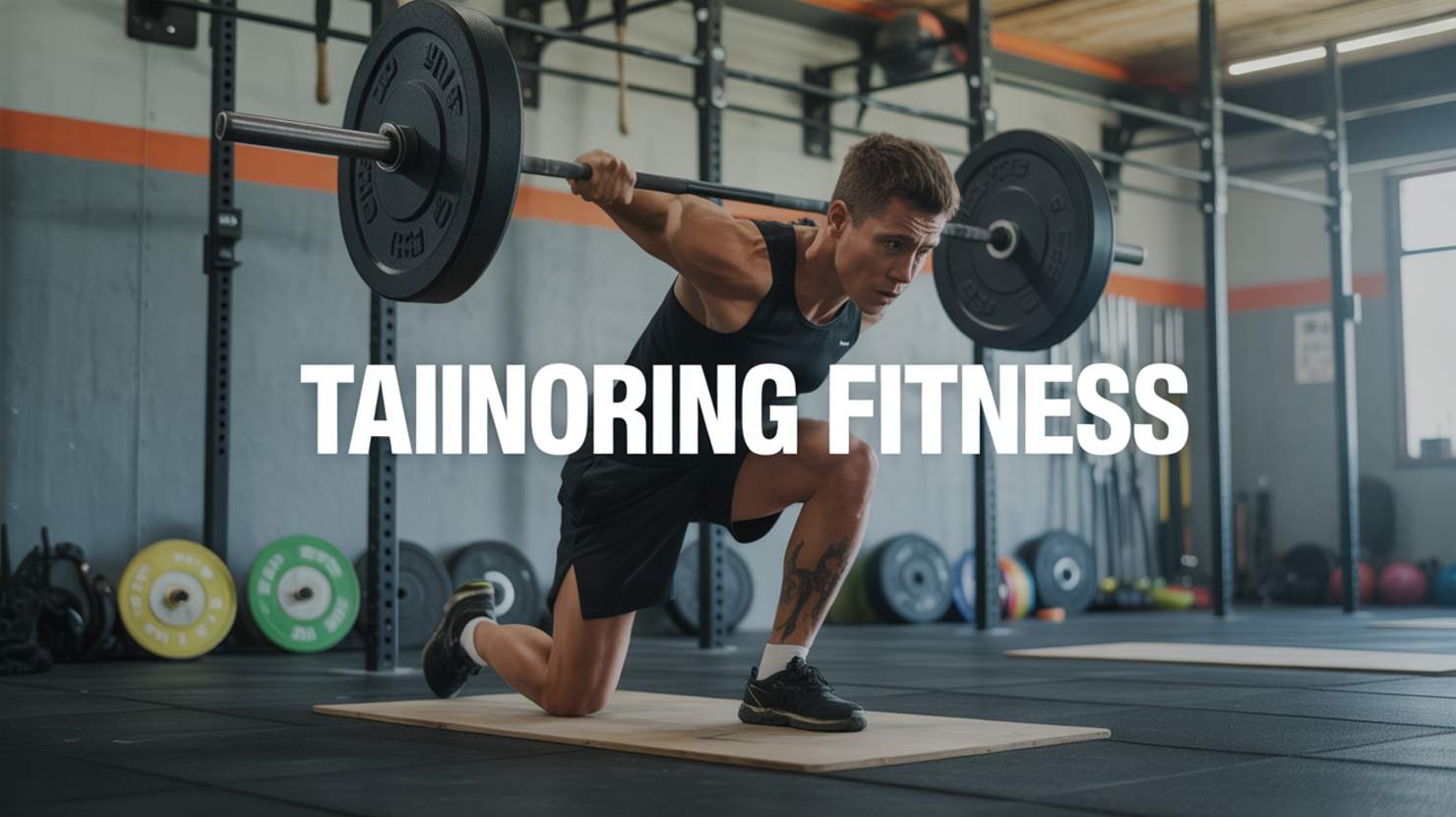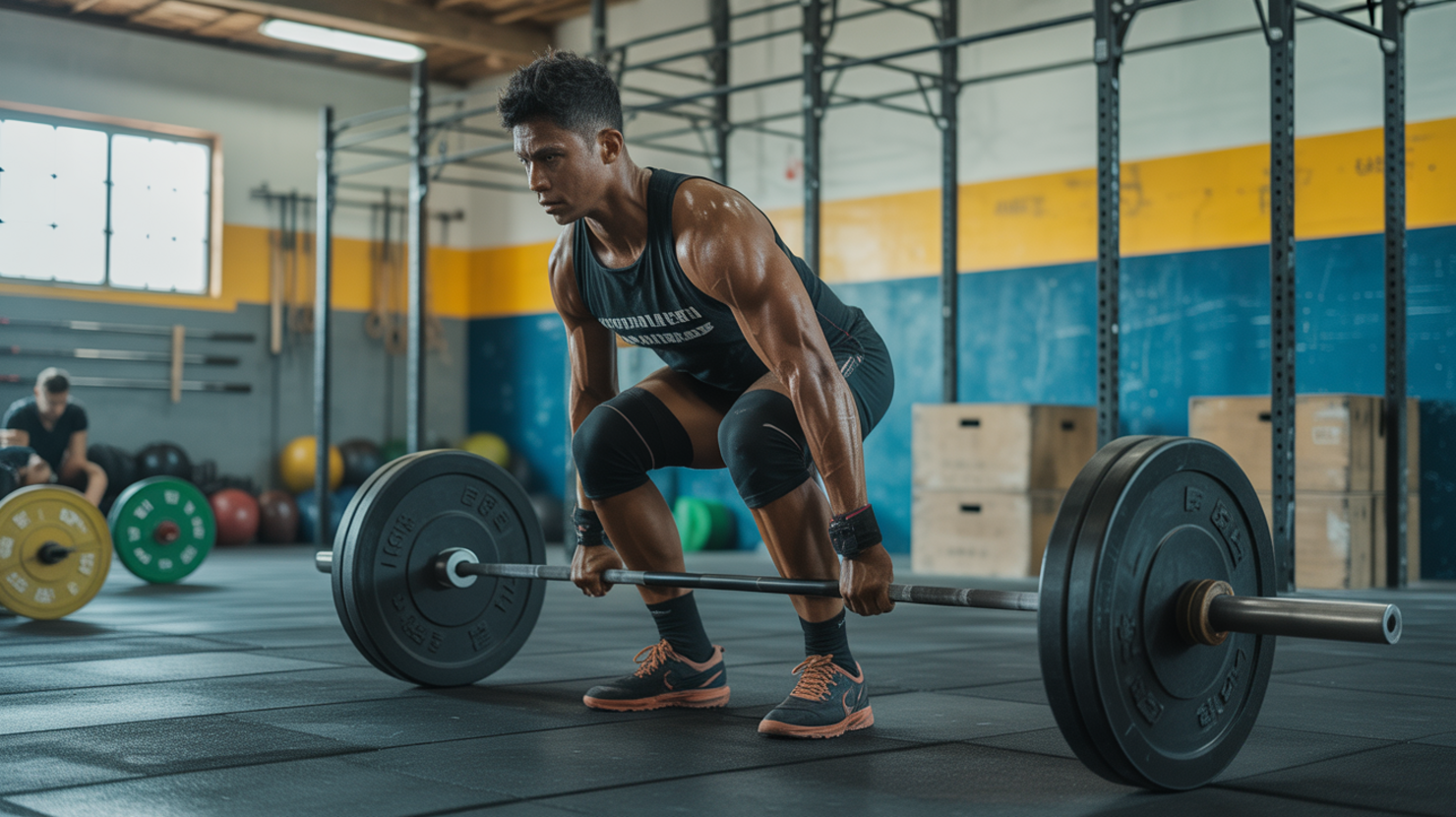CrossFit has become a global phenomenon, and its impact within Asia is particularly noteworthy. Far from being just another fleeting fitness trend, it is rapidly establishing itself as a staple within the Asian fitness landscape, adapting and thriving in diverse environments. 💪
The regional adoption rates across Asia tell a fascinating story. While established in Western markets earlier, the pace of growth in countries like Singapore, South Korea, Japan, and others has been remarkably rapid. This growth is often concentrated in bustling metropolitan areas, reflecting a distinct trajectory compared to established global trends. CrossFit boxes are becoming increasingly common, signaling its move from a niche activity to a more mainstream fitness option for a growing population eager for challenging, community-focused workouts.
Training in dense urban environments, characteristic of many major Asian cities, presents unique challenges that CrossFit has had to navigate. Limited available space often necessitates clever gym design and highly efficient use of equipment. High operational costs, particularly rent, can influence membership models and class structures. Furthermore, fitting intense training sessions into the packed schedules typical of urban life in Asia adds another layer of complexity. Overcoming these unique demands requires significant adaptability from both affiliate owners creating welcoming spaces and athletes finding ways to integrate training into their busy lives. 🏙️
Perhaps one of the key drivers behind CrossFit’s success in Asia is its strong cultural alignment with existing cultural traditions centered around group activities and social cohesion. The inherent community focus of a CrossFit box – the shared effort during a WOD (Workout of the Day), the collective encouragement, and the post-workout camaraderie – resonates deeply in cultures that value group belonging and mutual support. This fosters a powerful sense of connection, making the box feel less like a conventional gym and more like a community hub, which is a significant draw for many. 🤝
These combined factors – rapid regional adoption tailored to urban constraints, coupled with a natural fit with local cultural preferences for community – underpin CrossFit’s explosive growth and its successful integration into Asian fitness culture. Its ability to build resilient community hubs and offer effective fitness in the context of unique urban environments positions it for continued growing influence across the continent. 🌏
Balancing Training with 60-Hour Work Weeks
Demanding work schedules are a reality for many individuals, particularly in fast-paced urban centers across Asia. Juggling a rigorous training regimen like CrossFit alongside potentially 60-hour work weeks presents a significant challenge. Success in balancing these requires smart time management and a focus on training efficiency. It’s not about finding more hours in the day, but making the most of the hours you have available for both work and fitness. ⏱️
One key strategy involves optimizing your gym time by considering prime-time vs off-peak utilization. Peak hours often coincide with post-work times (e.g., 6-8 PM), leading to crowded boxes and potential wait times for equipment. If your schedule allows, explore training during off-peak hours – early mornings before the workday begins, or later in the evening after the rush subsides. Lunch breaks, if long enough, can also offer a window for a quick session. Training when the gym is less busy not only saves time but can also make your workout more focused and less stressful.
Integrating micro-WODs (Workout of the Day) into office breaks can also significantly boost your training volume and activity levels. These are short, intense bursts of exercise that require minimal space or equipment. Think air squats, push-ups against a desk, lunges, planks, or even burpees in an empty meeting room. A 5-10 minute micro-WOD during a coffee break or between tasks can help maintain metabolic activity and keep your body primed, rather than remaining sedentary for hours. Remember to be mindful of your work environment and colleagues when incorporating these.
Finally, utilize your commute time for integrated mobility work. Instead of just sitting passively, perform simple stretches or mobility drills. On public transport, gentle neck rotations, shoulder rolls, or ankle circles can be done discreetly. If you walk or cycle part of your commute, focus on dynamic stretches or simply increasing your pace to elevate your heart rate. Even standing while commuting can be more beneficial than sitting. Resources like mobility guides from fitness experts can offer ideas for incorporating these small movements throughout your day. For more general health benefits of incorporating activity, you can consult resources like the World Health Organization’s guidelines on physical activity. By layering these brief, intentional movements and training sessions into the margins of a busy week, you can effectively progress towards your fitness goals without sacrificing your professional responsibilities. 🚶
12-Week Phase Breakdown: Adaptation to Peak
Preparing for the CrossFit Open, especially while managing a demanding schedule like those common in Asia, requires a structured approach. A 12-week cycle offers ample time to build, refine, and peak. This period isn’t just about doing random workouts; it’s a carefully segmented progression designed to maximize your potential when the Open workouts are announced.
We can break this cycle into three distinct, yet interconnected, phases, each lasting four weeks. This phased approach ensures you’re not peaking too early or feeling burnt out before the competition even begins. 🗓️
The initial four weeks (Weeks 1-4) are dedicated to metabolic foundation building. Think of this as your base camp. The focus is on improving aerobic capacity, enhancing work capacity at lower intensities, and strengthening basic movement patterns. This phase isn’t about hitting personal bests; it’s about increasing your engine and durability. Workouts might be longer, less intense, and focus on consistent pacing and volume accumulation. This lays the groundwork for everything that follows.
Following the foundation comes skill-specific intensity ramping (Weeks 5-8). With a solid base established, the training shifts towards increasing intensity and honing specific CrossFit skills. This is where you’ll start incorporating heavier lifts, more complex gymnastics movements, and replicating the higher intensity, shorter duration efforts often seen in Open workouts. The goal is to become more efficient and powerful in the movements likely to appear, gradually increasing the pace and difficulty to simulate competition demands without fully peaking yet.
Finally, the cycle culminates in competition-simulated testing (Weeks 9-12). This phase is about tapering slightly, focusing on priming, and practicing the art of performing under pressure. You’ll integrate mock Open workouts, practice transitions, strategize pacing, and dial in nutrition and recovery protocols specific to game day. Volume might decrease slightly, but intensity remains high, ensuring you’re sharp and ready to perform at your absolute peak when the Open arrives. This structured progression is key to arriving at the Open feeling prepared and powerful.
Here’s a simple breakdown:
| Phase | Weeks | Primary Focus |
|---|---|---|
| Foundation Building | 1-4 | Aerobic Capacity & Work Capacity |
| Intensity Ramping | 5-8 | Skill & Power Development |
| Competition Simulation | 9-12 | Peaking & Practice |
Nutrition Timing for Nightshift Workers
Working the night shift presents a significant challenge for anyone maintaining a consistent fitness routine, especially when training for something as demanding as the CrossFit Open. The disruption to your natural circadian rhythm profoundly impacts nutrition timing, making it difficult to eat at conventional hours. This can affect digestion, energy levels during training, and crucial recovery processes. Successfully navigating nutrition requires strategic planning and adaptability to fuel performance through these irregular hours. 🌃
A critical meal window often occurs around 3 AM. This point in your shift is vital for sustained energy and muscle function. Proactive meal preparation becomes your best friend here. Instead of relying on limited or unhealthy options available late at night, prepare balanced meals in advance. Focus on combining lean protein, complex carbohydrates, and healthy fats. Consider making batch meals like chicken with rice and vegetables, preparing protein-rich overnight oats, or assembling hearty wraps that are easy to pack and eat on a break. Having these nutrient-dense, portable meals ready ensures you get the necessary fuel without resorting to poor choices when fatigue sets in. 🍎
Sleep disruption is a common side effect of night shifts and directly impacts recovery and hormonal balance, both critical for athletic performance. While prioritizing consistent sleep (even during the day) is paramount, some individuals explore supplementation to support overall well-being around irregular cycles. Discuss options like magnesium (often considered for sleep support), Vitamin D (especially if sunlight exposure is limited), or omega-3 fatty acids with a healthcare professional. Always consult a doctor before adding any supplements, as timing relative to your unique sleep/wake cycle and individual needs is important. Supplements should complement a whole-foods diet, not replace it.
Despite careful planning, there will be times you need to rely on available options, often from convenience stores at odd hours. Knowing how to find relatively nutrient-dense choices in these situations is a valuable skill. Look for accessible protein sources like Greek yogurt, cheese sticks, hard-boiled eggs, nuts/seeds/jerky (mind sodium), or canned fish/chicken. Pair these with sources of complex carbohydrates such as bananas, apples, oatmeal packets, or whole-grain crackers. Make a conscious effort to limit sugary drinks, candy, and heavily processed snacks, which provide quick energy but lead to crashes. Making smarter choices here can significantly help bridge nutritional gaps.
Effectively managing nutrition while working nights demands foresight, consistency, and making informed choices under challenging circumstances. By strategically prepping meals for key windows like 3 AM, considering targeted supplementation under guidance, and navigating convenience store options wisely, you can optimize your fueling strategy despite the unique demands of your schedule.
Monsoon-Season Training Workarounds
Monsoon season in many parts of Asia brings unique challenges to maintaining a consistent training schedule. Heavy rains, flooding, and even typhoons can make commuting difficult or impossible and turn outdoor training into a hazard. Adapting your CrossFit routine becomes crucial during these periods to ensure you stay on track towards your Open goals while prioritizing safety. 🌧️
One primary concern is finding effective ways to train when getting to the box is not an option. This is where home WODs for typhoon days become invaluable. You don’t need a full gym setup to get a quality workout. Focus on bodyweight movements like air squats, lunges, push-ups (and their variations), burpees, planks, and core work. If you have minimal equipment like a jump rope, a single kettlebell, or resistance bands, you can incorporate them for added intensity. Plan ahead by having a few go-to bodyweight or minimal-equipment workouts ready. Simple interval training, AMRAPs, or EMOMs using these movements can keep your conditioning sharp and your muscles engaged until you can safely return to the gym.
Beyond just the training itself, the humidity-adjusted recovery protocols are vital during the monsoon. The high humidity often means increased sweating during workouts and slower evaporation, which can impact cooling and hydration. You’ll need to pay extra attention to hydration and electrolyte balance. Simply drinking water might not be enough; consider electrolyte drinks or supplements, especially after intense sessions. Ensure your training gear can wick away moisture, and allow adequate time for clothes and shoes to dry to prevent fungal issues. Active recovery, like stretching or mobility work, done in cooler, indoor environments can also be more comfortable and effective than trying to recover outdoors in oppressive humidity.
Finally, consider flood-safe equipment alternatives if your regular gym access is compromised or if home equipment is stored in a vulnerable area. While not a perfect substitute, resistance bands offer versatile options for strength training. A single dumbbell or kettlebell can provide countless exercises. Even sturdy household items can sometimes serve as makeshift equipment for specific movements (though always prioritize safety and proper form!). The key is resourcefulness and adaptability, finding ways to maintain stimulus even when your usual tools are unavailable. Planning for these scenarios before the monsoon hits will save you stress and keep your training consistent.
Cultural Competitions vs Global Standards
Preparing for the CrossFit Open, especially within vibrant Asian fitness communities, involves navigating a fascinating intersection: balancing the insights gained from local leaderboards with the demands of the global standards. While the Open is a worldwide event drawing hundreds of thousands of participants, the performance data and community dynamics you experience closest to home offer invaluable context that can significantly shape your strategy. 🗺️
Analyzing your position on the local leaderboard provides a more immediate and realistic benchmark against your peers. It helps identify strengths and weaknesses prevalent specifically within your region or even your home box. Perhaps athletes in your area collectively excel at specific movements, possibly due to prevalent coaching expertise or readily available equipment, or maybe there’s a common struggle with a particular skill like handstand push-ups or heavy barbell cycling. This local context can be a powerful tool for targeted training adjustments, showing you precisely where you stand relative to your direct competitors before you even consider global rankings. Understanding your immediate competitive landscape and how your training translates locally is a significant advantage.
One of the most practical and often overlooked challenges in the global Open is the crucial impact of timezone differences. The worldwide score submission deadline is rigidly set for Monday at 5:00 PM Pacific Time. For athletes situated across various Asian time zones, this translates into a very challenging window, frequently requiring scores to be verified and submitted late Monday evening or even during the early hours of Tuesday morning, depending on your specific location. Planning your workout attempts strategically throughout the week, ensuring accurate score verification, and executing timely online submission via the official CrossFit Games website is absolutely critical. Don’t ever wait until the final hours; potential technical glitches, internet issues, or unexpected delays can easily derail your submission. Being acutely aware of your exact local deadline equivalent is paramount for every athlete aiming to get their score on the board. ⏳
Furthermore, training environments and coaching philosophies across different regions can sometimes lead to a regional movement specialization focus. Some areas might have gyms with specific equipment accessibility or historical coaching expertise that naturally results in athletes becoming particularly strong in certain skills, like Olympic lifting complexes or complex gymnastics sequences, more so than others. While excelling locally and building on these strengths is undoubtedly rewarding, Open success ultimately demands proficiency across a wide and unpredictable range of movements, fitness modalities, and energy systems. Athletes must proactively ensure their training cycle, like a dedicated 12-week prep program, actively addresses potential gaps that might arise from a narrow regional focus, guaranteeing they are robustly prepared for whatever tests the global competition ultimately throws at them each week.
Successfully navigating the complexities of the CrossFit Open as an athlete in Asia means intelligently leveraging the strengths and insights offered by your local community and performance data, while simultaneously adhering strictly and diligently to the global rules, standards, and critical deadlines. It’s a vital blend of grassroots effort, strategic planning, and international competitive awareness that defines the Open experience.
Recovery Systems for High-Density Cities
Navigating intense CrossFit Open preparation alongside the demands of living and working in a bustling, high-density city presents unique challenges. Your training isn’t the only thing that needs to be optimized; your recovery protocols are just as crucial. In crowded urban environments, traditional recovery methods might be less accessible, requiring clever adaptation. 🧘
One significant area is managing muscle soreness and promoting circulation, especially after tough WODs involving high volume or heavy lifting. Compression therapy, using boots, sleeves, or garments, is an excellent tool for reducing inflammation and speeding up recovery. In cities, finding 24/7 compression therapy access points can be key. Look for specialized recovery clinics that offer late-night or early-morning sessions, gyms equipped with recovery tools, or consider investing in a personal compression system if feasible within your living space. Proactive compression use can make a substantial difference in your ability to bounce back for the next training session.
Another widely discussed recovery aid is CBD oil, known for its potential anti-inflammatory and sleep-enhancing properties. However, the landscape of CBD oil regulations across jurisdictions in Asia is incredibly varied and often strict. Before considering CBD, it is absolutely essential to thoroughly research and understand the specific laws in your country or region. Possession or use of CBD can lead to severe penalties in some places, so always prioritize legal compliance over perceived recovery benefits.
Finally, traditional heat therapies like saunas are fantastic for recovery but are often impractical or impossible to access in small urban apartments. Fortunately, there are effective sauna alternatives in tiny apartments. You can recreate some of the benefits through:
- Hot Baths or Showers: Spending 15-20 minutes in hot water can help relax muscles and improve blood flow.
- Contrast Showers: Alternating between hot and cold water can stimulate circulation.
- Topical Heat Creams or Patches: Applied directly to sore muscles, these can provide localized warmth and relief.
Prioritizing and adapting your recovery methods to fit the constraints of high-density urban living is vital for sustainable training throughout your 12-week CrossFit Open preparation cycle. Effective recovery ensures you arrive at each training session feeling refreshed, ready to perform, and less susceptible to injury.
Post-Open Progression Pathways
The CrossFit Open is a demanding test, pushing your limits and revealing areas for growth. But the journey doesn’t end when the scores are submitted. In fact, the post-Open period is a crucial time for development, offering various pathways to continue challenging yourself and deepen your involvement in the sport and community. It’s an opportunity to transition from the general fitness test of the Open into more specialized or supportive roles. ✨
For those with competitive aspirations, the focus often shifts towards Local qualifier preparation timelines. Many affiliates and regions host their own competitions leading up to the CrossFit Games season’s later stages. These typically require specific training cycles, often starting weeks or months out. A smart approach involves analyzing your Open performance, identifying weaknesses, and structuring your training to peak for the qualifier dates. This period is ideal for focused skill work, strength building, and conditioning tailored to typical competition formats.
Beyond immediate competition, the seasonal sport cross-training benefits offer a fantastic way to improve overall athleticism and prevent burnout. Engaging in activities like swimming, cycling, running, or even team sports can build aerobic capacity, develop different muscle groups, and provide a mental break from standard CrossFit programming. This can enhance your performance when you return to the barbell and rig. Cross-training is a core tenet of functional fitness, ensuring well-rounded physical development during the off-season. Resources like articles on the benefits of different training modalities can provide valuable insights. (e.g., Search for reputable sports science articles on periodization and cross-training).
Finally, consider community leadership opportunities. The CrossFit ecosystem thrives on its members’ passion. Becoming a certified judge, assisting with coaching, volunteering at local events, or leading specific group initiatives (like running clubs or mobility sessions) are rewarding ways to stay engaged and contribute. These roles not only strengthen your affiliate but also deepen your understanding of movement standards and programming principles. Information on becoming a certified judge is available through the official CrossFit website (see the CrossFit Online Judge Course).
Here’s a look at how these pathways might fit into a post-Open calendar:
| Pathway | Typical Timeline Focus | Key Activities |
|---|---|---|
| Local Qualifier Prep | Immediate 8-16 weeks post-Open | Skill refinement, Strength cycles, Competition simulations |
| Seasonal Cross-Training | Immediate 4-12 weeks post-Open (can extend) | Engage in other sports (swim, bike, run, etc.), Active recovery |
| Community Leadership | Ongoing year-round | Judge Course, Volunteer, Assist coaching, Organize events |
Embracing one or more of these paths ensures your fitness journey remains dynamic and rewarding long after the Open leaderboard is finalized. Use this time to grow, recover, and contribute.













